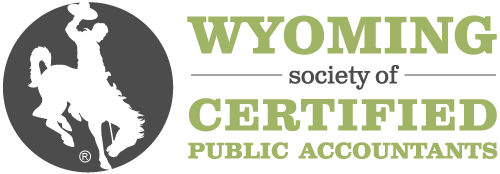Description
This presentation integrates federal taxation with overall financial planning. The course will explore tax strategies relating to the central financial tactics of wealth building, capital preservation, and estate distribution. The result is a unified explanation of tax-economics that will permit the tax professional to locate, analyze, and solve financial concerns. Designed to improve the quality of services to clients and the profitability of engagements, this program projects the accountant into the world of financial planning. This course will give the participant practice in analyzing problems, developing solutions, and presenting final personal financial plans to clients. The course surveys wills, living trusts, gifts, marital property, and probate avoidance. Will and trust forms are explored along with living wills, durable powers of attorney, and nominations of conservator. Designed to eliminate estate problems and death taxes, the emphasis is on practical solutions that are cost effective. Note: There is a minimum passing rate of 70% for this course.
Highlights
• Financial Tax Planning • Building an Estate • Preservation of Wealth • Deferral • Reduction • Income Splitting • Elimination • Asset Protection • Estate Planning • Estate & Gift Taxes • Wills & Probate • Trusts • Entity & Title • Life Insurance, Annuities & Buy-Sell Agreements • Special Business Issues • Estate Tax Freeze Rules • Elderly & Disabled Planning • Post-Mortem Planning & Tax Return Requirements
Objectives
• Match short-term financial goals with the four generic investment purposes stating the planning purpose of this process, recognize the importance of defining, listing and prioritizing realistic goals, and show how investing allocation changes with age. • Name three goals of money management listing four types of income, identify three causes of increased taxable income for itemizing taxpayers, and state at least eight types of taxable income and their proper reporting. • Recognize spending habits and show how to design a budget to increase discretionary income, define net worth using a balance sheet, identify an asset inventory listing liabilities, and state where changes could be made to meet financial goals. • Name two benefits of tax deferral, outline the former use of tax deferral under 1034, and state the tax deferral advantage under 1031 listing its three elements. • Name at least six tax saving credits identifying qualified computational expenses and stating their limitations and restrictions. • List six formats for income splitting, define the tax treatment of employee and self-employed business expenses particularly home-office expenses noting the two non-exclusive use exceptions and the income limitation, name changes made to home office deduction under TRA '97, and recognize the ability of self-employeds to make annual deductible contributions to a Keogh plan. • Identify how to value fringe benefits according to IRS regulations, show how to comply with ERISA requirements, state the proper reporting of reimbursed and unreimbursed business expenses under accountable and nonaccountable plans, define substantiation of auto expenses using a fixed and variable rate, and list eligible retirement benefits exempt from social security taxes. • State the importance of the three types of creditors associated with asset protection and fraudulent transfers. • List the three basic elements of estate planning and state for clients where changes may be necessary in designing such a plan, and recognize the importance of well-drafted legal documents and show how to go about drafting them. Name the key participants in an estate planning team and in estate administration and define their roles in estate planning. • List the eight potential death taxes noting the federal estate tax as it applies to various size estates, identify two principal taxes that impact how individuals are taxed at death, and state the expiration of the state death tax credit. • Define four types of wills listing at least five functions a will can perform, identify at least four types of bequests, list the duties of executors and guardians, and name four ways to hold title describing their tax ramifications. • Define the four party relationship of a trust, name at least eight reasons to establish a trust, and list eight types of trusts stating their estate planning function. • Name nine basic tax and legal title formats, showing the advantages and disadvantages of holding property in a sole proprietorship, a corporation, or an S corporation, and how to avoid associated title pitfalls. • Name the four different persons in which rights are placed by life insurance and list at least five reasons to purchase life insurance. • Name three reasons why a business interest must be valued in an estate that is subject to federal estate tax, list eight factors used to determine the net value of a business under the regulations, and state the eight valuation factors in R.R. 59-60 and their impact. • List the benefits of an estate freeze and its ability to reduce the value of a business interest, name four types transactions to which Chapter 14 rules apply, define terminology used in the Chapter 14 valuation rule that applies to corporations and partnerships, and list three exceptions to 2701. • State the basic eldercare benefits of Medicare, Medicaid, and Supplemental Security Income, identify several disadvantages of the Medicaid program and show how to determine income noting three separate asset groups, list the dangers and benefits of gifting to family members, and illustrate how individuals can use private insurance as a short-term solution for catastrophic illness. • Illustrate post-mortem estate planning in the face of funeral and administrative expenses by using elections and disclaimers.
Designed For
This program is appropriate for professionals at all organizational levels.
Registration for this course has passed.
Course Pricing
WYOCPA Member Fee
$409.00
Non-Member Fee
$539.00
Your Price
$539.00
Upcoming Courses
-
Auditing Standards: A Comprehensive Review 25-26
October 15, 2025
-
Auditing Standards: A Comprehensive Review 25-26
October 15, 2025
-
S Corporation (Form 1120S) ? Formation to Liquidation 25-26
October 16, 2025
View all upcoming courses
